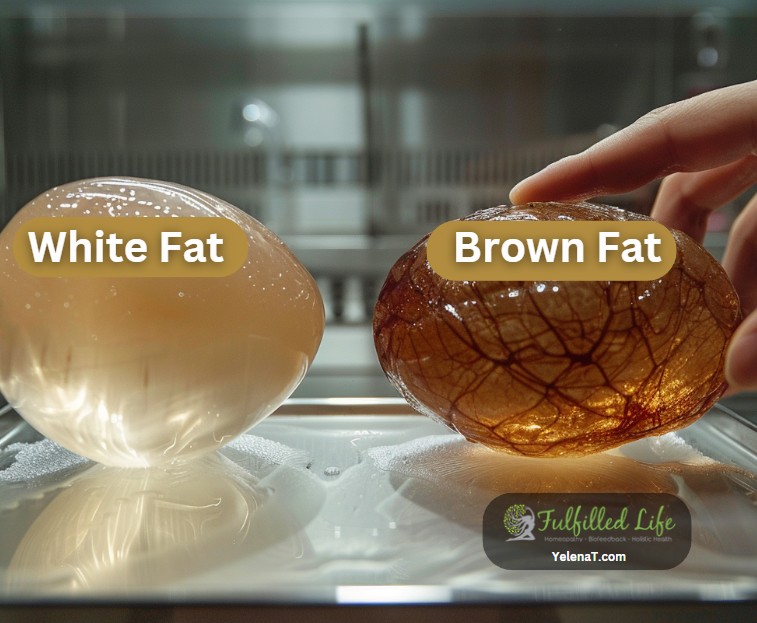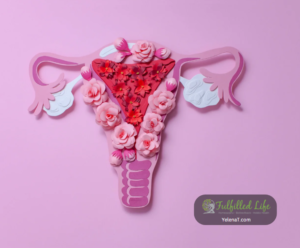When you think of body fat, do you see it as something to get rid of entirely? If so, you’re not alone. But not all fat is created equal. Some types of fat can actually boost your metabolism and help with weight loss, while others may put your health at risk.
Let’s break down the fascinating world of fat – from the calorie-burning power of brown fat to the health risks of excess white fat – and uncover what it means for your health and weight management.
The Different Types of Fat: A Quick Overview
- White Fat: The Energy ReserveWhat it does: White fat stores energy, cushions organs, and insulates the body.
Health risks: Excess white fat, especially around the belly, is linked to conditions like insulin resistance, inflammation, and metabolic disorders.
Key takeaway: While some white fat is essential, too much can harm your health.
- Brown Fat: The Calorie BurnerWhat it does: Brown fat generates heat by burning calories, a process known as thermogenesis.
Where it’s found: Common in babies but still present in adults, especially in the neck and upper back.
Key takeaway: Activating brown fat can boost metabolism and support weight loss.
- Beige Fat: The Metabolic ShapeshifterWhat it does: Beige fat can switch between acting like white fat or brown fat, depending on the body’s needs.
Why it matters: It offers a middle ground – sometimes storing energy, sometimes burning it to generate heat.
Key takeaway: Activating beige fat can improve your body’s ability to manage weight.
Why Brown and Beige Fat Are Game-Changers for Weight Loss
The main difference between white fat and brown/beige fat lies in their metabolic activity. While white fat stores energy, brown and beige fat burn it. But there’s a catch – as BMI (Body Mass Index) increases, the activity of brown and beige fat decreases.
How High BMI Affects Fat Thermogenesis
- Metabolism slows down: Your body burns fewer calories at rest.
- Fat storage increases: Excess energy is stored as harmful white fat, especially around the organs.
- Weight loss becomes harder: Reduced fat-burning activity means even diet and exercise may feel less effective.
This makes it critical to focus not just on losing weight but also on supporting the activity of brown and beige fat.
Why Visceral Fat is the Most Harmful
Among all types of white fat, visceral fat – the fat stored around your organs – poses the greatest health risk. It’s strongly linked to:
- Heart disease
- Type 2 diabetes
- Metabolic syndrome
As BMI increases and brown/beige fat activity declines, visceral fat tends to accumulate. This makes managing weight more than a cosmetic concern – it’s a matter of protecting your long-term health.
How to Activate Brown and Beige Fat
Even if your BMI is high, there are proven ways to stimulate brown and beige fat activity:
- Cold Exposure:Take cold showers or use ice packs on specific areas of the body. Cold temperatures encourage brown fat activation to generate heat.
- Exercise:High-intensity interval training (HIIT) can help convert white fat into beige fat. Regular physical activity also boosts overall metabolic health.
- Balanced Diet:Include healthy fats like omega-3s (found in salmon, walnuts, and flaxseeds). Focus on whole, nutrient-rich foods to support fat metabolism.
- Manage Stress and Sleep:Chronic stress and poor sleep interfere with fat metabolism. Aim for 7–9 hours of quality sleep and practice relaxation techniques like yoga or meditation.
Key Insights for Sustainable Weight Loss
Understanding the role of different types of fat is a game-changer for weight management. Brown and beige fat, in particular, offer a natural way to burn calories and improve metabolism. By focusing on strategies to activate these fat types, you can overcome the challenges of a slowing metabolism – even if your BMI is higher than average.
FAQs About Fat and Weight Loss
- Can you naturally increase brown fat?
Yes, through cold exposure, regular exercise, and a balanced diet, you can activate and increase brown fat activity. - What foods activate beige fat?
Foods rich in omega-3 fatty acids, capsaicin (found in chili peppers), and polyphenols (like green tea) can help stimulate beige fat. - Is all white fat harmful?
No, some white fat is essential for energy storage and insulation. The problem arises when it accumulates excessively, particularly around the abdomen. - How does stress affect fat metabolism?
Chronic stress raises cortisol levels, which can lead to increased white fat storage and reduced brown fat activity. - Does aging reduce brown fat?
Yes, brown fat activity tends to decline with age, but it can still be activated with proper strategies. - Can you lose visceral fat quickly?
Targeting visceral fat takes time, but regular exercise, a healthy diet, and stress management can reduce it effectively over time.
Ready to Take the Next Step?
If you’re tired of struggling with stubborn fat and slow metabolism, let’s create a personalized strategy for you! Schedule your complimentary call today, and discover science-backed ways to support your weight loss goals.








